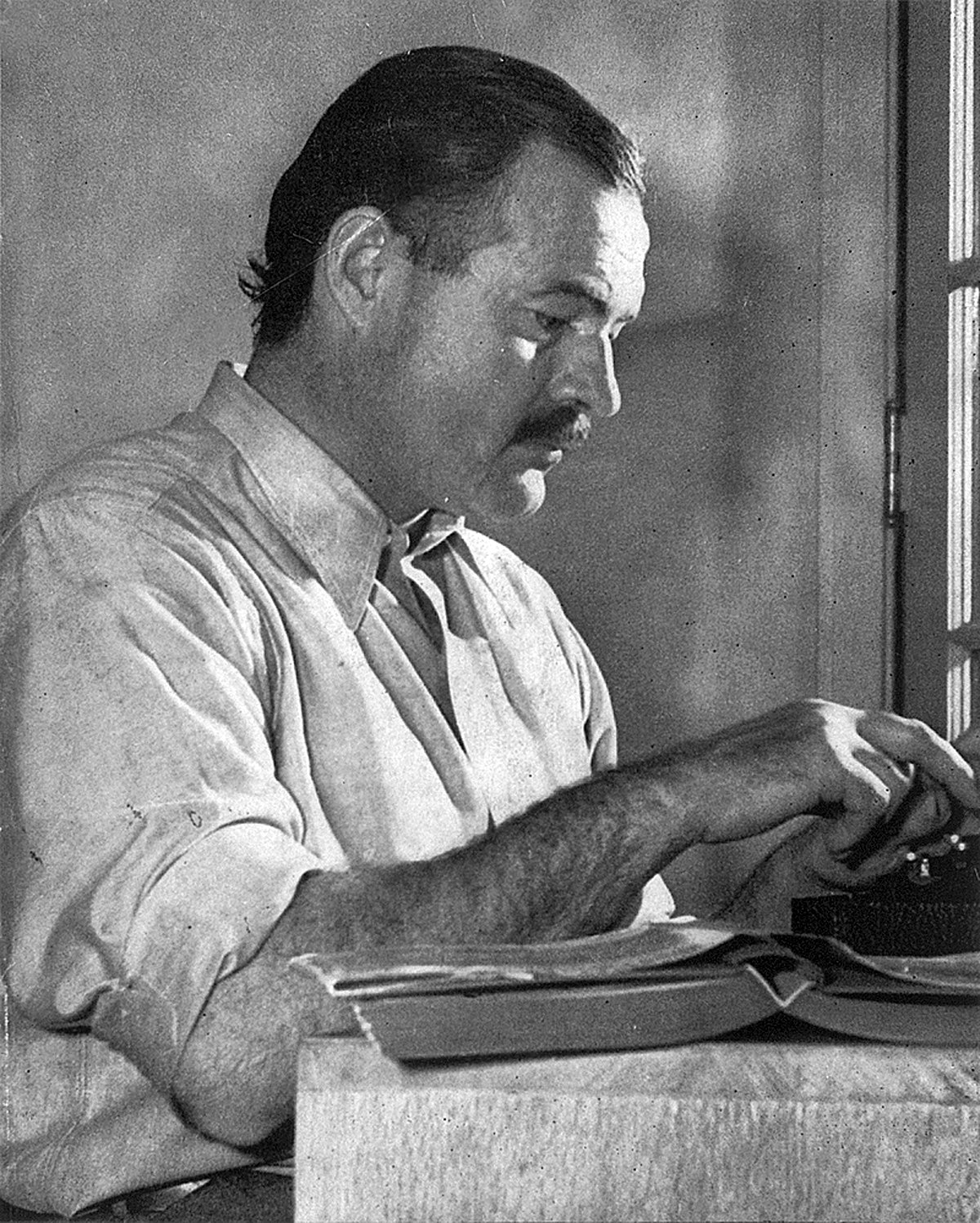In the realm of literary discussions, the question at hand may seem deceptively simple: How many books did one of America’s most renowned writers, Ernest Hemingway, actually write? However, it turns out to be a more complex inquiry than meets the eye. While some may argue that the answer is straightforward, taking into account the books published during Hemingway’s lifetime, both fiction and non-fiction, others raise valid points regarding the inclusion of creative pamphlets, a prevalent practice among aspiring authors in the early 1900s, as well as the books released posthumously.
From one perspective, the inclination is to count any work that meets the criteria of book-length. Nevertheless, opinions on this matter vary. Additionally, there are compilations of Hemingway’s letters and previously unpublished works that were assembled after his demise. Though these collections contain Hemingway’s writing, they were not personally arranged by the author, as they were never intended to be standalone works.
Generally, it is widely accepted that Ernest Hemingway wrote a minimum of 16 books, comprising 7 novels, 6 collections of short stories, and 3 non-fiction works. However, beyond these 16 acknowledged publications, scholars engage in fervent debate regarding multiple works by Hemingway that were published posthumously. Consequently, the range of accepted published Hemingway books can be as low as 16 or as high as 28, with most estimates falling between 19 and 20. Personally, the inclination is to consider the number as 19. Nevertheless, an in-depth exploration of the question regarding Hemingway’s total book count is warranted, allowing a comprehensive understanding of why such a seemingly straightforward question provokes such extensive debate. Let us embark on this quest to determine the number of books attributed to Ernest Hemingway, delving into the intricacies that underlie this debate.
Hemingway’s 16 Established Books
Firstly, let us begin with the 16 works that practically no one disputes as genuine books in Ernest Hemingway’s bibliography. While it is acknowledged that he produced additional works, these are the 16 that are universally recognized and accepted as books or book-length compositions.
Hemingway’s Novels
- The Torrents of Spring (1926)
- The Sun Also Rises (1926)
- A Farewell to Arms (1929)
- To Have and Have Not (1937)
- For Whom The Bell Tolls (1940)
- Across the River and into the Trees (1950)
- The Old Man and the Sea (1952)
Hemingway’s Short Story Collections
- Three Stories and Ten Poems (1923)
- In Our Time (1924, with an expanded reprint in 1925)
- Men Without Women (1927)
- Winner Take Nothing (1933)
- The Fifth Column and the First Forty-Nine Stories (1938)
- The Snows of Kilimanjaro and Other Stories (1961)
Non-Fiction
- Death in the Afternoon (1932)
- Green Hills of Africa (1935)
- A Moveable Feast (Published posthumously – 1964)*
It is worth noting that some contend that there are only 15 Hemingway works, as they believe A Moveable Feast, being published after his death, should be excluded. However, this viewpoint is in the minority, as this collection was heavily worked on by Hemingway prior to his passing and is regarded as an integral part of his body of work.
- These books were primarily published during Hemingway’s lifetime, with A Moveable Feast containing entirely new material that was being prepared by the author at the time of his demise. As a result, it is considered a substantial addition to his collection of works. So, why do many individuals argue that the number of Hemingway’s books surpasses the aforementioned 16? Even common search engine results often state “At least X books…” Let us now explore the factors that contribute to the challenges associated with enumerating Hemingway’s books.
- One of the primary dilemmas in determining the extent of Ernest Hemingway’s literary oeuvre lies in the issue of overlap. Many of his short story collections contained stories that were previously published in earlier works, and sometimes these stories were combined to create subsequent collections. Consequently, a question arises: Should a collection with 20 short stories, but only 2 original ones, be counted as a separate work?
Furthermore, Hemingway’s body of work includes several limited editions of lengthy non-fiction articles, short stories, and narratives that straddle the line between short story and novella. There is even an example of a play based on his work, akin to a contemporary author penning a screenplay for the movie adaptation of their own book. Should a play be considered a distinct literary work? While most would argue against it, one might ponder whether a play can be perceived as a variant form of a novella. After compiling the initial list of books widely accepted as part of Ernest Hemingway’s canonical works, it is worth exploring other titles that are subject to acceptance or dispute. Let us delve into a comprehensive examination of the Hemingway works that were in progress during his lifetime but remained unpublished.
Contentious Hemingway Books
These books fall into the category of “disputed” works, although many scholars, collectors, and readers acknowledge them as bona fide Hemingway releases and include them in the overall count. Others reprint a substantial amount of old material with a sprinkling of new stories, leading to heated debates regarding their inclusion or exclusion.
Most of these disputed works are posthumous publications, as the unlisted Hemingway works from his lifetime consist of plays, long short stories, and limited editions—works that capture the attention of collectors of first edition Hemingway works but might not be regarded as conventional books.
Posthumous Hemingway Novels
Three significant Hemingway novels were published after his death, with two considered generally accepted additions to his canon, while one remains the subject of intense debate, particularly when considering the reaction of the general media.
- Islands in the Stream (1970): Widely recognized as part of the canon and among the most well-known posthumous works alongside A Moveable Feast.
- The Garden of Eden (1986): A novel that evolved over 15 years of writing during Hemingway’s lifetime, as he struggled to shape the narrative while releasing numerous other stories and novels during that period.
- The Dangerous Summer (1985): A non-fiction project that Hemingway worked on during the last two years of his life, exploring the real-life account of a rivalry between two individuals that escalated into increasingly perilous displays, culminating in a severe goring incident. Bullfighting had long been a subject of interest for Hemingway, and this work is often referred to as his final novel.
Additionally, True at First Light (1999) was a non-fiction book recounting Hemingway’s East African safari with his fourth wife in the early 1950s. This book received negative reviews and ignited a debate about how posthumous works should be treated, and at what point an edited and subsequently released work should be considered part of the canon. While most of these works are generally regarded as part of the canon, the inclusion of True at First Light remains a topic of major contention in academic circles.
Other “Hemingway Books” Published After His Death
Several collections primarily composed of Hemingway’s works exist, but they are generally not recognized as part of his canon. This is largely because many of these publications consist of past articles, journalistic pieces, or compilations of stories and non-fiction pieces originally published in magazines.
The short list of such works includes:
- Hemingway, The Wild Years (1962)
- By-Line: Ernest Hemingway (1967)
- Ernest Hemingway: Cub Reporter (1970)
- Dateline: Toronto (1985)
- Under Kilimanjaro (2005)
Few individuals consider any of these posthumous publications as part of Ernest Hemingway’s canon. In fact, Under Kilimanjaro is essentially a reworking of an earlier Hemingway work by two editors, making it even less likely to be seen as canonical. However, some argue that the other four works could be debated, particularly by those who believe that collections of magazine articles, newspaper pieces, and non-fiction stories should be counted.
To wrap up
In conclusion, when it comes to Ernest Hemingway, it is unsurprising that a literary figure of his stature boasts an extensive publishing history. While debates persist regarding the exact number of books attributable to Hemingway, considering the significant amount of posthumous publications (often spanning several decades), valid arguments can be made for totals of 16, 19, or 20 books authored by Ernest Hemingway.



